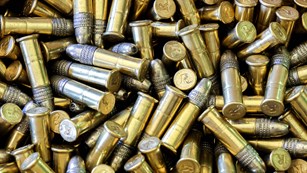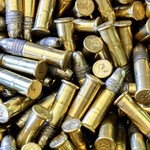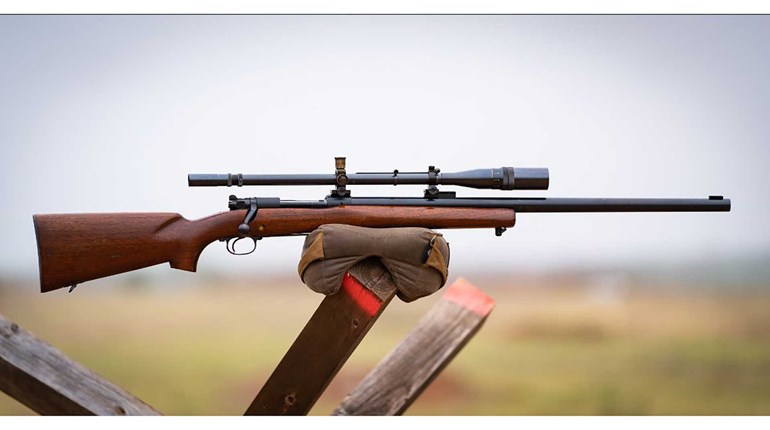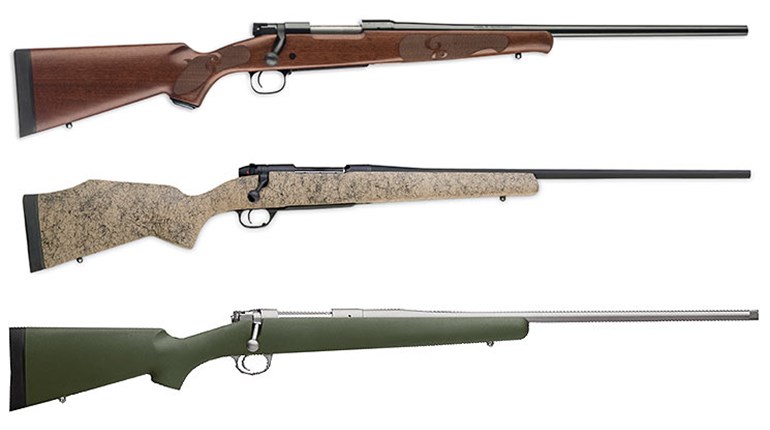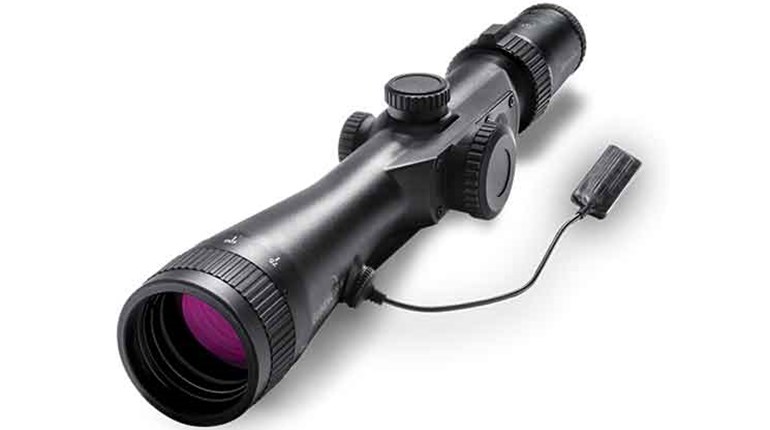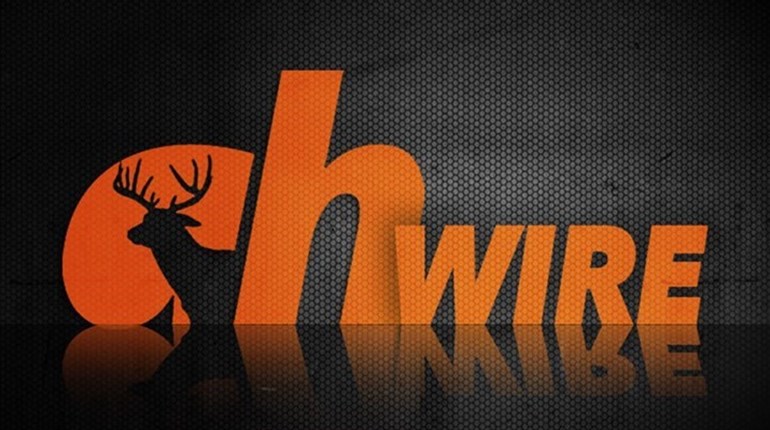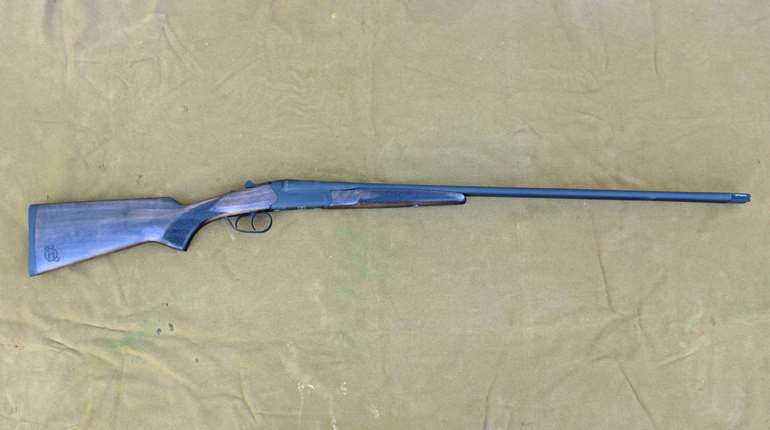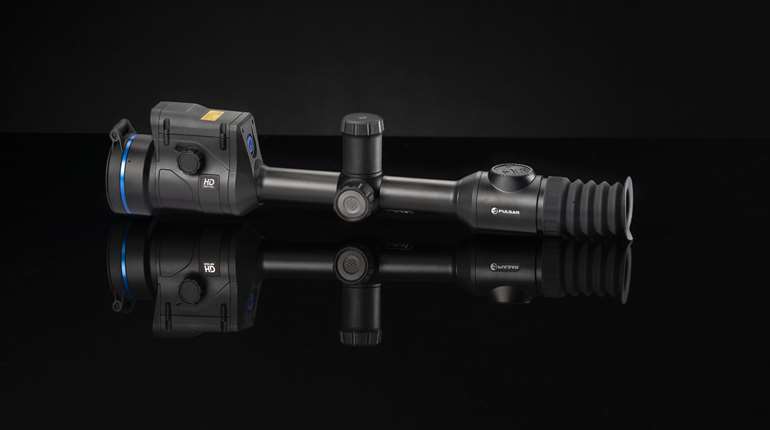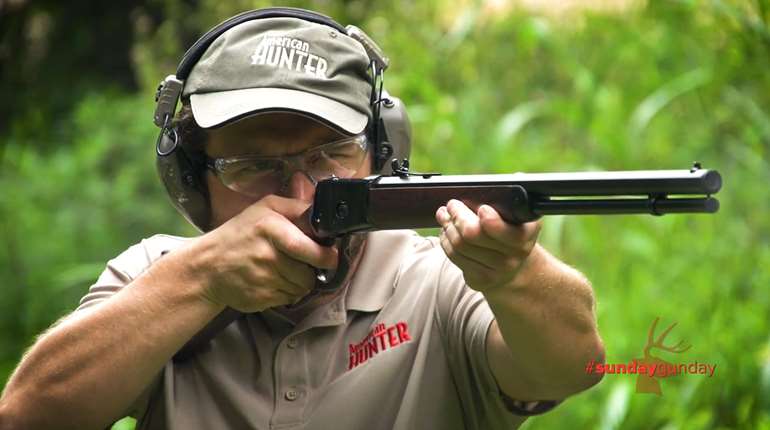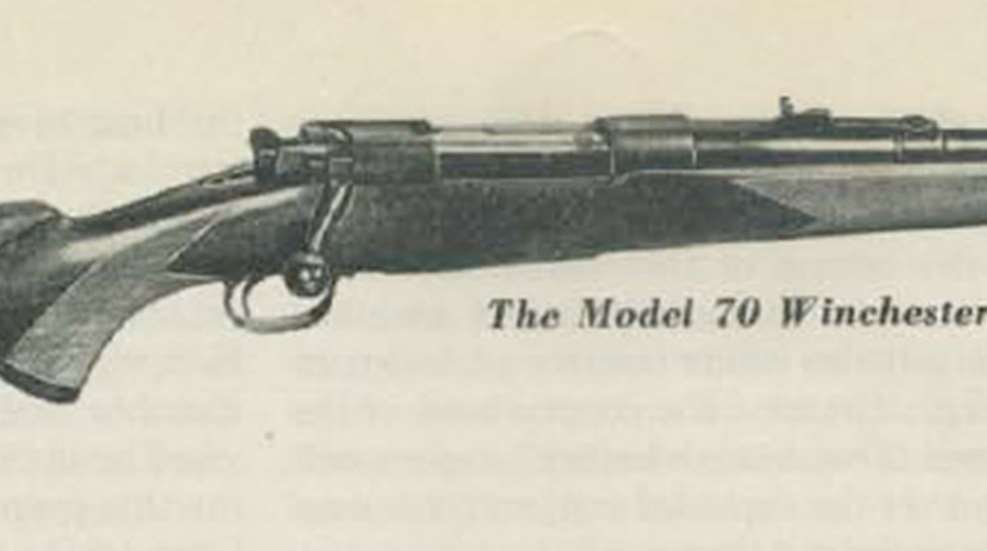
1936--American Rifleman Magazine
The Model 54 Winchester has passed into history. No more will be made except in .22 Hornet caliber. The New Year of 1937 will usher in an improved Winchester bolt-action rifle, the new model 70, which will supplant the old Model 54. Practically all criticisms which have been aimed at the old model have been met in the design of the new model. Gone is the "canoe-paddle" forestock, the high-angle bolt handle and vertical safety, the sear bolt-stop, the much-criticized trigger, the solid floor plate and poor trigger guard. Instead we have an excellent modern rifle with the same low receiver line and a much lower action lever to permit a low position of any telescope sight.
The firing mechanism is a new development. The trigger is machined out of a single forging and is so designed with the sear that, together, they give a very short, crisp let-off with no military take-up and with scarely any movement of the trigger.
The new bolt stop, working with the left-hand locking lug on the forward end of the bolt, retains the bolt so that the sear no longer acts as a bolt stop. This bolt stop operates vertically. We found the external bolt-release plunger, on the left side just behind the rear edge of the receiver. It is convenient and effective without being obtrusive.
The new design safety lock operates in a horizontal plane. The lever lies straight in the firing position. It has two other positions. The intermediate position is about 30 degrees to the left of “OFF.” In this position the firing pin is locked but the bolt is not, permitting easy removal of the bolt.
The “ON” or fully locked position is at the limited of its forward movement on the left side. When set in this position the firing pin is retracted from the sear and the bolt locked shut. This safety lever is operated with the tip of the thumb. Set at “intermediate”, we found it easy to throw this safety while raising the rifle to the shoulder.
The bolt handle is designed with a new bend which allows low mounting of a telescope sight. Te knob is carried rearward, positioning it opposite the trigger. We found the manipulation easy, smooth and fast. When raised the lever projects at a 45 degree angle from the side, not from the top.
The speed lock on the Model 70 is quicker than that on the M-1903 rifle; the firing pin has only one-half the travel. The cocking cam is shortened 50%. The firing pin will withstand “dry firing” without injury. We found the striker travel to be a scant 3/16 inch. The magazine is made with a hinged floor plate. We found floor plate and magazine could be easily and quickly released by pressing a projecting plunger in front of the trigger guard.
The stock has a wider fore-end, rounded but approximating the beavertail style. We found the forestock a great improvement in feel. It is over 18 ½ inches long and measures 16 ½ inches from the trigger to the swivel. The maximum gripping width is 1-3/4 inches, tapered to 1-1/2 inches at the swivel.
Special safety features have been incorporated in the design of the Model 70 by which the firing pin is mechanically prevented from being blown out by a pierced primer. In addition two large vent holes in the forward end of the bolt allow ample gas outlets.
The Standard Model
The barrel has a ramp front-sight base. Option of 24-inch or 20-inch lengths, except in caliber .220 Swift, which is standard only in 26 inch.
The standard stock dimensions are: Length of pull, 13 ½ inches; drop at comb 1-5/8 inches, and at heel, 2-5/8 inches. Grip and fore-end are checkered.
The sights are: Front, Lyman 5/16-inch gold bead, mounted on ramp. Rear, Winchester 22G open sporting. The receiver is drilled and tapped for the Lyman 48W-JS sight, and the rifle is furnished with this sight at an extra charge. All front sights are equipped with sight cover, except on the Bull gun. The magazine holds 5 cartridges. The trigger guard, or forged steel, has a new shape. Swivel bases for sling strap are attached.
National Match, Target Model and Bull Guns
The barrel is floating type. No front band, forearm screw or escutcheon. National Match rifles come in 24-inch length; Target model (medium heavy) in 24-inch only, with .220 Swift, 26-inch only; Bull gun, 28-inch only; standard in .30 Government ’06. The National Match rifle has Lyman 17A front and 48WJS rear, Bull gun same as National Match. No ramp sight-base on Bull guns.
The stock, a new design with full pistol grip, has a full, fluted comb and wide, beavertail fore-arm similar to style on Model-54 target models. No checkering. The sling strap is a 1 ¼ inch leather sling, treated with neats-foot oil and equipped with new-design, bakelite, Albree keeper.
A chromium-plated, metal, forearm-adjustment-base is located on the underside of the forearm. This is controlled by the sling-strap, swivel-bow assembly, allowing various positions in holding. Sling comes attached on Target Models and Super Grade rifles. The dimensions, with Lyman sights attached, are: length of pull, 13 ¼ inch; drop at comb, 1 3/8 inch; drop at heel, 1-11/16 inch; pitch down, 3 inches. Girth of grip, 5-5/16 inch. Center of trigger to end of grip, 3 inches; drop from center of bore, .50 inch at comb; .78 inch at heel.
I am particularly pleased with the new low-line bolt-handle, because I insist upon having the hunting telescope right down on top of the receiver where it must be placed for efficient employment. I am also pleased with the new forestock, the new trigger mechanism, the new bolt stop and the removable floor plate.
Many of us recommend the low-line safety and action levers, and also a slightly longer action to permit magazine-loading of target cartridges which have an increased overall length. In the sample I find less than 1/10-inch length clearance for the .30-’06 cartridge in the magazine well. The M-70 well is about 3/16-inch too short for the .280 Ross cartridge which has an overall of 3.516 inches against 3.328 inches for the W.R.A. 180-grain cartridge in .30-’06 caliber and of 3.594 inches in .300 Magnum caliber.
The new Model 70 will be made in .250 Savage, .220 Swift, .257 Roberts, .270 Winchester, 7-mm Mauser and .30-’06 calibers. Since the present production, first to come through, is in .30-’06 caliber our sample rifle is of that caliber, least accurate of the above list. The improved rifle costs very little more than the old model. The regular list price of the standard rifle equipped with open barrel-sight was $59.75 for the Model-54 and is $61.25 for the Model 70.
We immediately transferred our Fecker scope bases from the Model-54 to the Model-70, the new model having screen holes already provided in the top of the receiver hood for the purpose. We used our 8X Fecker with 1 1/8-inch objective in Fecker target mounts. The Model-70 handled beautifully in all positions and the factory trigger-pull seemed excellent. Our first zero-group, fired from sitting at short range, indicated good accuracy. The target mounts place the line of sight unnecessarily high on this improved action. A properly mounted hunting scope would be much better, of course, for a secure and comfortable hold.
At 200 yards my first five shots from bench rest went into less than 2 inches with F.A. 1933 Service ammunition. I tried five from prone with sling which position changed the impact 3 inches low and an inch to the right. Five more from sitting with sling did not affect the impact except to lower it less than ½ inch. The two groups measured 4.32 and 5.15 inches, respectively, at 200 yards. Barr also tried it prone with sling and shot into 4.72 inches, his group-impact being an inch higher than mine. Barr also tried five shots from the bench rest and got a group of 4.98 inches which landed an inch lower than my first group similarly fired. Barr also tried ten shots from prone rest, getting a group of 4.20 inches and an impact only ½-inch under our original zero at 200 yards.
So far we had noticed a maximum change in impact of only 1-1/2 minutes of angle. We now removed the sling and rested the forestock on the oak cross-piece that fronts our portable bench rest. Barr got two groups in this manner which averaged 5 inches, but the impact of both was 4 inches high. Checking with W.R.A. 180-grain (pointed expanding_ sporting ammunition, Barr’s group measured 3.72 inches and its impact was normal. My own groups with this load (4.80 and 5.0 inches) landed 6 inches lower when using the sling.
Most of our groups were formed with a flier which enlarged them to the sizes quoted above, all of which were measured between centers of the widest shots. Most of our 5-shot groups had four shots in 3 inches or less, and our 10-shot group had nine shots in 3.08 inches. Figuring all shots fired from prone or rest at 200 yards, the 40 rounds of M-1 Service ammunition averaged less that 4 ¾ inches per group and the 15 rounds of W.R.A. sporting ammunition averaged less than 4 ½ inches.
Outside of the meager length and cartridge-overall clearance of the magazine, the only disappointment I experienced in my initial examination of the new Model-70 action was the lateral safety. While this works fine in connection with iron sights or target scopes it is inconvenient with low-mounted hunting scopes. In fact, when a wide-field scope which has enlarged ends is properly placed close to the top of the receiver it is practically impossible to operate the Winchester safety at all.
I find the practical limit which permits employment of this safety is 1/8-inch clearance and that means without gloves and the acceptance of some inconvenience. That much clearance between a small, straight, ¾-inch scope and the safety lever leaves a clearance of 3/16-inch at the bolt handle, 1/8-inch clearance at the hood and 5/16-inch clearance at the bridge, the base of the new bolt handle projecting 1/8 inch above the bridge in raised position. With a 7/8-inch Zielklein scope the same low limited of 1/8-inch clearance would raise the line of sight about 1/8 inch, while the enlarged ends of the Zielyt model and the bigger Zielvier and Dialytan scopes would raise it still more.
In the first example, the lowest line of sight with the ¾-inch scope is 2 1/8 inches above the comb. With the Zielklein scope the drop would be about 2 ¼ inches, and with the wide-field scopes, which have eye pieces of 1 ¼ and 1 ½ inches, the comb-drop from the line of sight would be 2 3/8 and 2 ½ inches, respectively. Therefore, the new Winchester safety nullifies a portion of the advantage offered y the new, well-designed Winchester bolt handle. A considerable number of hunters will not be so restricted, because they habitually disregard the safety and instead keep their cartridges in the magazine, keeping the chamber empty until they are ready to fire. Such sportsmen will have their hunting scopes placed lower than the minimum-limit position mentioned above, to barely clear the hood and the base of the bolt handle.






